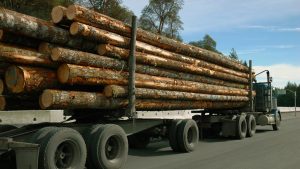Workers’ compensation for chronic pain in British Columbia is in need of an update is it falls further and further behind modern science, says BC Building Trades Workers’ Advocate Merrill O’Donnell.
WorkSafeBC’s “approach to chronic pain is inconsistent with the scientific evidence that has been adopted at the highest levels of the medical community globally, nationally and domestically,” O’Donnell told the Journal of Commerce.
Policy falls short in two specific ways when it comes to handling chronic pain.
Compensation
Of particular concern is that WorksafeBC “compensates workers a meagre 2.5 per cent of total disability for their loss of earning capacity,” said O’Donnell.
Compensation for chronic pain suffering is significantly less than other forms of injury in B.C. and is seen as an add-on condition, not a condition in and off itself, said O’Donnell.
“For many impairments, a worker’s earning capacity can be impacted widely, from a low percentage for hearing loss to, say, 50 per cent to 70 per cent for a loss of a limb right up to 100 per cent if the worker is found to be competitively unemployable due to their injury,” he said.
But chronic pain is locked at 2.5 per cent of 90 per cent of your long-term wage. This means that, on average, if you earn $55,000 per year, 90 per cent of your net weekly earnings would be about $767.11. If suffering from chronic pain, regardless of how debilitating, you would be eligible for 2.5 per cent of $767.11, or roughly $19 per week.
“Given the new medical consensus on chronic pain, it is now clear that chronic pain can range from slightly discomforting to totally debilitating,” said O’Donnell.
“Therefore, chronic pain should be compensated similar to other conditions in the Permanent Disability Evaluation Schedule — from zero to 100 per cent — in keeping with the impact on earning capacity.”
The low level of compensation becomes more problematic when combined with the other reason WorkSafeBC’s chronic pain policy is falling behind, according to O’Donnell.
Diagnosing Pain
“Dr. Owen Williamson, chair of the Pain Medicine Physicians of B.C. Society, who was requested by WSBC to assess their policies on chronic pain, opined in his September 2019 report that the current system does not reflect the current scientific evidence,” O’Donnell said.
In Williamson’s report, he draws specific attention to several categorizations and definitions of chronic pain in B.C. policy not in keeping with modern science.
“Using improper measuring tools to begin with, the system is unable to formulate effective treatment plans for injured workers or compensate them fairly for their loss of earning capacity,” said O’Donnell.
The BC Building Trades and Williamson recommend the policy be updated to remove the use of the terms subacute pain, specific chronic pain and non-specific chronic pain.
“The use of the label ‘non-specific’ does not provide the valid translation of the symptom into a diagnosis,” writes Williamson in his report.
Instead, Williamson suggests future policy changes use the definitions acute, chronic primary and chronic secondary pain.
These terms would “obviate the need for classifying pain into specific and non-specific categories and provide the framework for a more reasoned approach to determining entitlements,” writes Williamson, who came to a similar conclusion on the policy’s definition of chronic pain and use of other outdated terms.
Another issue for O’Donnell and Williamson, is WorkSafeBC does not treat chronic pain as an individual disease in its own right.
“Because chronic pain is inadequately defined by the board, their subsequent decisions on treatment and compensation range from inadequate to devastating to workers’ lives,” said O’Donnell.
“Currently, chronic pain is an ‘add-on’ to another injury condition – physical or mental – accepted by the board.”
All of these issues and several others can lead to a lower quality of life for a worker with chronic pain, said O’Donnell.
“Without a proper diagnosis the worker continues to live and work with chronic pain and oftentimes, especially in construction, becomes a statistic in work absences, shortened life expectancy, poverty, mental stress, opioid addiction and suicide.”
O’Donnell said WorkSafeBC is currently working on policy updates that may be revealed this year.
Follow the author on Twitter .











Recent Comments
comments for this post are closed